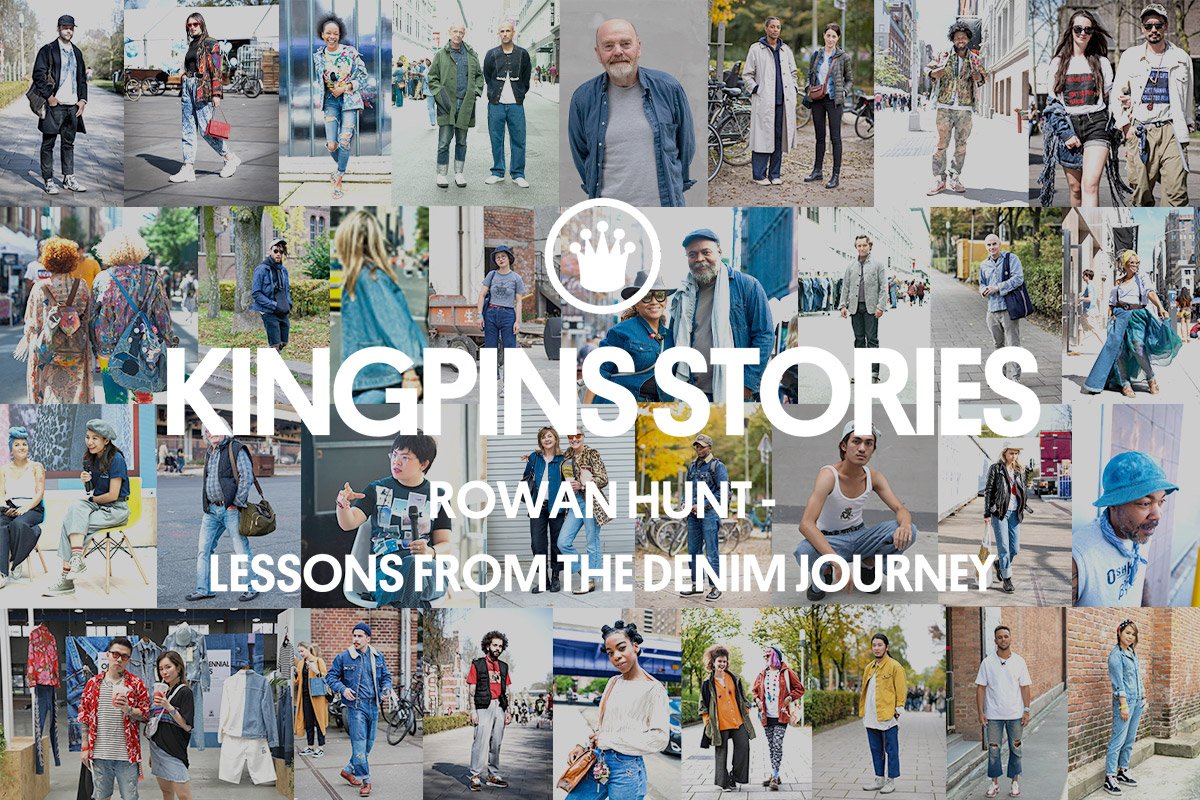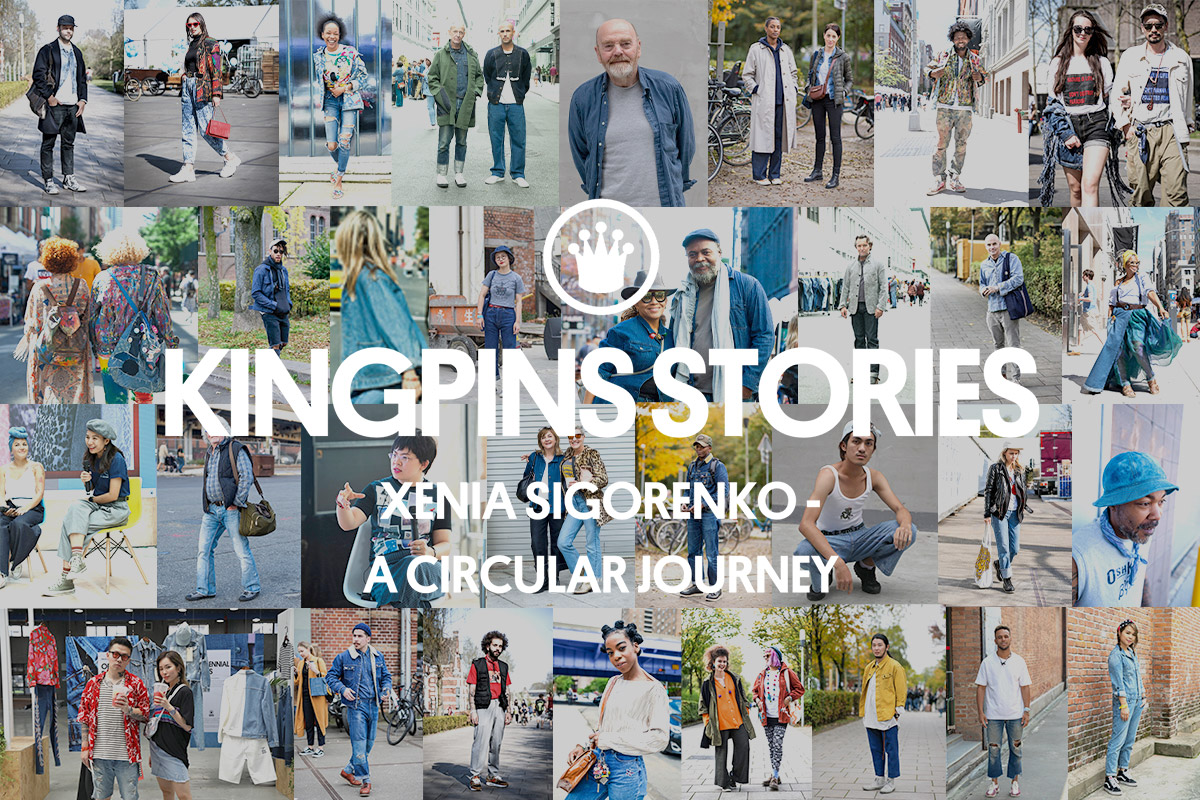Kingpins Stories: Miguel Sanchez – Homage to Denim Dyers
I can still vividly recall the itchy smell in the big room, the noise of the engines working in coordination with the ropes moving up and down, like in a kind of hypnotic performance. It is September 1988 and it is the first time I see a Denim dyeing range (live!) It was an old German machine with 12 ropes at a mill in the Basque Country of Spain.
Even after having read reports from more experienced colleagues in my company and studied many blueprints, I cannot help having a feeling of astonishment. The machine is big.
It was time to open my eyes and ears. For a young application technician, every detail in the technical discussions was important. There was no literature to learn from in a world where everything is practical, so the person in charge of the production was the best source of knowledge.
Even if it is invisible to most of the denim industry, the denim dyers are key to securing the desired features and performance of the basic material that winds up becoming a denim fabric. The desired shade, cast, tone consistency, final looks, etc., from warp up to the after washdown of the garments, depend on the decisions a dyer must take. The level of automatization nowadays is logically incomparable with that of more than 30 years ago, but the human vision is still essential for a high-quality production and successful product development.
To all denim dyers with blue hands out there, please allow me to introduce you to three of the production experts that I met over the course of more than 34 years, whom I learnt many things (up to and including technical issues) that made me a Denim devotee.
Iñaki is a true Basque man. He has a ruddy complexion, does not talk much and is a very reserved person. As traditional in the Basque country, he loves good cuisine and playing a Spanish card game called mus.
He is very experienced and extremely focused on everything around a production set, from bath preparation and starting conditions at the beginning of the run right until the final meter is through. For him, success means delivering what it is expected.
We spend together endless hours discussing processes, in-process controls and quality parameters.
It is 4 a.m. The dyeing seems to be running stable after 15 hours. We can relax a little. It is a good time to speak about anything, including football of course.
The dyeing range is set in a way that Rope 1 goes a different path, to a room where a colourimeter reads the tone values every 10 seconds. We stand there for hours looking at the screen. No football, no movies—just a dotted line in a graph. Even though I am some 30 years younger than Iñaki, he looks fresh after 20 hours of production running. I am very tired.
Iñaki retired some 20 years ago. The mill that he used to work at no longer exists. It shut down in 2010.
Lessons For a Technician
It is important to be extremely meticulous in setting and confirming starting dyeing conditions. You must stay focused on keeping all defined dyeing parameters for the whole time of the run. If something starts going wrong, you make decisions fast and diligently. You never panic and transmit confidence to your team. It’s not unlike like when the vital signs of a patient in a surgery room become unstable. Keep your mind clear and never let panic take over. You can somewhat relax, but only after the garments are washed, finished and everything is approved by Quality Management. But by then, you will be busy by with a new production run.
Willem is a slim and very energetic person with a strong, but jovial character and loves to tell jokes of all kinds. He likes music and plays the accordion very well. Even being a top-level expert, he is eager to learn as many technical details as possible about dyes, chemicals and application processes. The question “what’s new” is always the start of all discussions.
We spent hours discussing what possibilities the new dyes and processes offer and how could they be implemented in the central dyehouse of the group, located in a nice place, in the centre of a Venice-like city in Belgium. The exchange of ideas always continues over lunch and dinner.
The Italian green ranges are perfectly equipped to apply all kind of dyes and hence achieve a wide range of colour denim shades, some of them are incredibly special. There are no technical limits for new product ideas, but one issue has become particularly important. Water must be saved; waste waters must have reduced level of salts and pollutants. Interesting topics to discuss for mid-‘90s denim production.
The production facility in the centre of the city shut down in 2009. Willem retired, but continued his career as a consultant for different denim groups through today.
Lessons For a Technician
Denim technicians must keep themselves informed about any new development. New dyes, new equipment and new application processes. A combination of genuine curiosity and technical interest is required. Ask everything. Accept any received information, but always keep a critical thinking. Trust but verify.
Keep all information properly filed and classified. Come back to it frequently. A weird idea today could be a wonderful innovation tomorrow. Like chess players, you try to anticipate what challenges could be and figure out how to overcome them.
Discuss with other professionals any ideas and concerns. Share your knowledge and learnt lessons with your team. Teach and explain. Learn and understand.
Johnny is Dutch, having moved to South Africa when he was still young and eventually became a production director at one of the denim groups in that country. We meet in 1991, when apartheid was is in its last years. There are toilet signs separating black and white people still in many places, including the company that Johnny works for.
Johnny has an open and cheerful character. He likes jokes and lively discussions. He has an endless number of ideas for new colours and effects, which he loves to discuss. We spent hours continuously brainstorming. We regularly went downstairs and took long walks to the rope range, where a trial or production was running.
When we meet the next time, Johnny has prepared a folder with samples from different trials made based on the ideas that we exchanged at the previous visit.
With almost endless possibilities for innovation, denim has the power to challenge and activate your imagination.
By the end of the ’90’s and early years of the 21st Century, there were three denim groups in South Africa, one more in Botswana and projections for a new mill in Namibia.
Johnny passed away a few years ago. I am still in contact with his son, also a truly kind person, and love to sharing anecdotes of the denim adventures that his father and myself went through.
The denim company switched name in 1991. In 2001, a new owner took over the management and took away the magic too. To my knowledge, the mill stopped production operations just a few years later.
Lessons For a Technician
Improving denim development means replacing “impossible” with “difficult, but feasible.” Let your mind fly free. Engage in brainstorming with an open and collaborative aim. An open mind works in perfect coordination with technical knowledge, so keep it updated.
Rephrasing a marketing message from a sportswear brand (“Impossible is nothing”), what I would say about denim is “Impossible is what?”
Every denim mill has a person and a team that makes sure the company not only delivers good production on time, but also participates as a key part in any new product to be developed. That person knows what to do.
I had the fortune to meet and work with more than 100 denim dyers over the course of my professional time and always felt close to them. It was almost like belonging to a sort of secret society.
Thanks to all of them, I understood how exciting and innovative, yet demanding and difficult denim is. Thanks to all of them for giving me a chance to make a career in the Blue World.
I have nothing but respect and appreciation to all the denim technicians in the industry.


